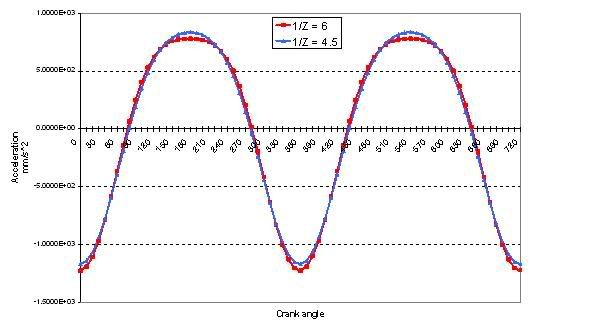F1_eng wrote:Xpensive, piston acceleration is not linear.
Terry
"In that context, accelleration is actually max-piston-speed over time-to-zero."
You simply can't use this method for calculating, it is too wide a time gap to average, you are going to lose all the acceleration detail.
The "time to zero" method is heavily flawed and results obtained from it would almost always be misleading.
Build a piston displacement model, can be done in 5 minutes in excel.[/quote]
Oboy! If you could please spare us five minutes of you precious time, it would be to immense benefit to all of us?



